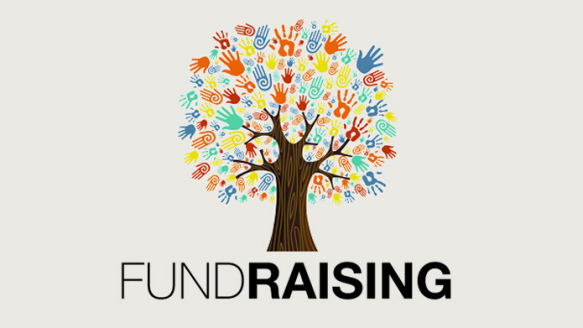Nonprofit Agency: How to Optimize Your Influence with Expert Guidance
Nonprofit Agency: How to Optimize Your Influence with Expert Guidance
Blog Article
The Role of Neighborhood Involvement in Nonprofit Fundraising: Structure Lasting Relationships for Lasting Support
Area engagement is significantly recognized as a critical component of successful nonprofit fundraising. By promoting authentic partnerships with local stakeholders, organizations can grow trust fund and commitment, which are essential for sustainable support. However, the approaches and techniques employed to engage areas vary commonly, raising vital questions concerning efficiency and influence. What are the ideal techniques for growing these important connections, and how can nonprofits determine their success in this sector? Comprehending these dynamics might substantially affect the future of fundraising efforts and the general objective of nonprofit organizations.
Understanding Neighborhood Involvement
Area interaction is an important component of effective nonprofit fundraising efforts. Nonprofits should identify vital stakeholders-- such as neighborhood participants, local services, and various other companies-- to create reliable interaction methods.
Effective area engagement is predicated on energetic listening and responsiveness to the demands and passions of the area. This process includes soliciting feedback, comprehending community dynamics, and guaranteeing that the organization's objective straightens with neighborhood concerns. Involving the area can take various kinds, consisting of public conferences, volunteer possibilities, and collaboration campaigns, each created to encourage participation and investment in the company's goals.
Furthermore, area involvement ought to be approached as an ongoing discussion as opposed to a single effort. By promoting an inclusive setting where area voices are heard and valued, nonprofits can develop a strong structure for future fundraising ventures. Ultimately, a deep understanding of area involvement equips organizations to create genuine connections that improve their overall efficiency and sustainability.
Benefits of Solid Relationships
Strong partnerships formed through area involvement return numerous benefits for not-for-profit fundraising efforts. Firstly, these connections foster count on and credibility, essential components in motivating benefactors to add. When possible supporters see a nonprofit actively included in their area, they are most likely to rely on its goal and impact.

In addition, these connections help with efficient communication. Nonprofits can take advantage of their connections to share tales of impact, updates, and requires, guaranteeing that supporters stay enlightened and involved. This open line of communication not just enhances bonds yet additionally urges word-of-mouth promo, expanding the nonprofit's reach.
Lastly, solid area ties can bring in new partners and sponsors. Companies and individuals are more likely to line up with companies that demonstrate significant neighborhood participation, supplying extra sources and support that can substantially improve fundraising capacities. Therefore, cultivating durable relationships via area engagement is integral to a nonprofit's lasting fundraising success.
Strategies for Effective Involvement
How can nonprofits efficiently engage their communities to improve fundraising initiatives? Creating targeted strategies is essential for cultivating significant links. First, leveraging social media platforms makes it possible for companies to share their goal dynamically and interactively, getting to a wider target market. Routine updates, engaging material, and calls-to-action can galvanize neighborhood interest and involvement.
Second, organizing community events, such as workshops, volunteer chances, or fundraising drives, promotes in person communication, allowing nonprofits to display their impact and initiatives. These events not only increase funds yet additionally cultivate connections and allow community participants to engage straight with the reason.
Third, applying personalized communication approaches can boost interaction. Customizing messages to particular benefactor sections based on interests and past contributions cultivates a feeling of belonging and financial investment in the organization's mission.
Lastly, producing partnerships with neighborhood businesses and area leaders can enhance outreach initiatives. Joint efforts here are the findings can improve visibility and trustworthiness, showing a cumulative commitment to the area's wellness. By integrating these techniques, nonprofits can construct lasting partnerships that improve fundraising initiatives and drive sustainable assistance.
Determining Engagement Success
While engaging the community is essential for successful nonprofit fundraising, gauging the performance of these involvement initiatives is just as essential. Establishing clear metrics permits companies to assess just how well they are linking with their audience and achieving their fundraising goals. Secret performance indicators (KPIs) such as donor retention rates, volunteer engagement degrees, and engagement on social media systems give concrete data for examination.

Routinely evaluating these metrics allows organizations to pivot their strategies when needed, making certain that neighborhood involvement remains aligned with their total objective. Additionally, sharing these outcomes with stakeholders cultivates openness and develops trust fund, urging additional neighborhood participation. Inevitably, a robust dimension framework not only notifies future fundraising efforts yet also enhances the relationship between the not-for-profit and its supporters, preparing for lasting success.
Study in Neighborhood Effect
Many case studies show the extensive impact that area engagement can carry nonprofit fundraising success. One noteworthy example is the "Something to chew on" campaign, where a regional food financial institution partnered with colleges official statement and organizations to host area dinners. These events not just elevated funds yet also promoted a feeling of belonging among individuals, significantly increasing contributor retention rates.
Another compelling situation is the "Green Spaces Task," which entailed neighborhood homeowners in the revitalization of urban parks. This effort not just garnered financial backing from local businesses however also grew a volunteer base that contributed to ongoing maintenance and programming. The sense of ownership and pride among neighborhood participants equated into continual contributions.
In the world of arts, the "Art for All" project successfully engaged neighborhood artists and customers to develop collaborative art setups, causing enhanced visibility and contributions for a neighborhood arts nonprofit.
These instances highlight that when nonprofits prioritize neighborhood involvement, they can create long-term relationships that boost fundraising efforts, making certain sustainable support and cultivating a vivid neighborhood culture. Such instances demonstrate that area interaction is not just Look At This a technique yet an important pillar of not-for-profit success.
Verdict
In final thought, neighborhood interaction is important to the success of nonprofit fundraising initiatives. Eventually, a robust foundation of neighborhood support not just magnifies fundraising potential however likewise grows a culture of cooperation, necessary for achieving lasting organizational goals and sustaining purposeful effect. fundraising consultant.
Nonprofits must identify vital stakeholders-- such as neighborhood members, neighborhood services, and various other organizations-- to develop efficient interaction techniques.

In verdict, community interaction is essential to the success of nonprofit fundraising efforts.
Report this page